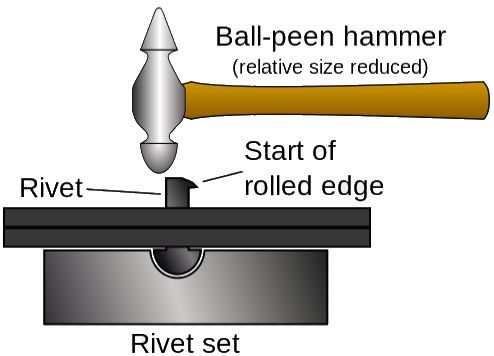Perhaps a lot depends on how much force one has available, and how soft the rivet is. .
Certainly you can form the head of a rivet just using a domed snap, but Terrys system is easier, and best is the use of a set up and then a conical snap and finally a domed finisher. The problem being, starting with a domed snap is that its quite easy to offset the head, and once its been knocked off line, its difficult to get all straight again.
The bigger presses tend to use guided snaps/dollies, which makes a difference. I shall be doing a 4″ TE shortly, with 3/16 and 1/4″ rivets. A guided dolly is the way to go there, along with a 10 ton press! The other alternative, where visibility is less of a problem, is to knock the rivet into a countersunk hole, which gets away without forming a second head at all – if that suits the circumstances.
There are various charts for head size etc, but snaps do differ, and its probably worth experimenting on a bit of scrap first. Once things are setting right, you know how much to allow.
mgj.





 ) to do the job, much more satisfying, we are engineers after all.
) to do the job, much more satisfying, we are engineers after all.

